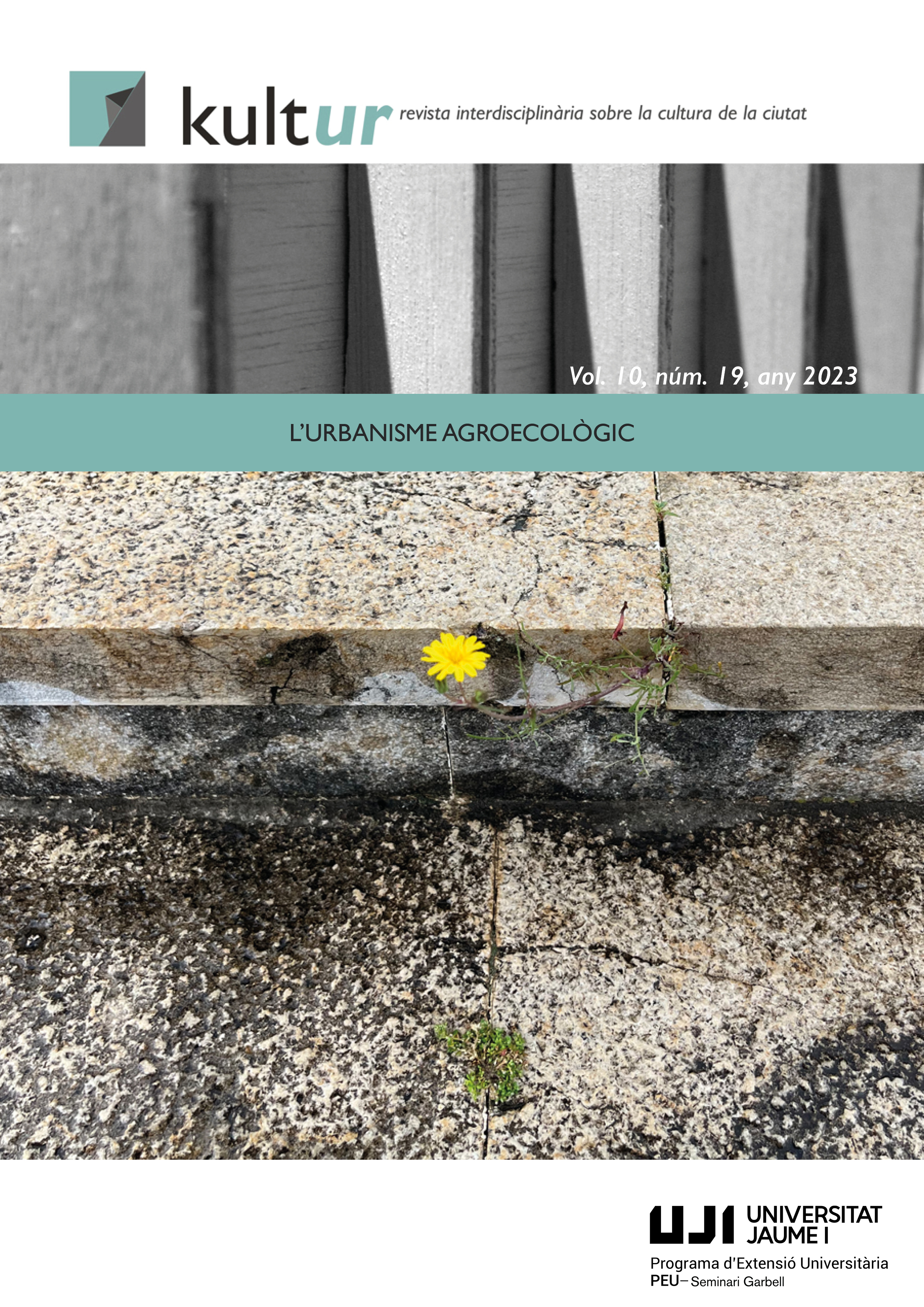Memory and (Spatial) Justice in Spain Remembering from Urban Ostracism
Main Article Content
Abstract
The mass graves of the War and Dictatorship (1936-1977) represent one of the most problematic legacies of the twentieth century, yet they are almost entirely absent from public space. This article seeks to recognise how diverse strategies have been developed since the 1970s to the mass graves to urban centres. It shows partial results of a broader research on the memorial initiatives developed on mass graves from the post-war period to the present day, between art history and ethnography. Firstly, the text presents the exclusionary dimension of mass graves and the ostracism to which they are condemned in relation to urban space. Secondly, it is explained how the search for justice through memorial actions relates to spatial justice. In the third point, initiatives to connect the mass graves to other points in the urban space are illustrated. It concludes by explaining that spatiality is implicit in the demands of the “Historical Memory” movements.
Downloads
Article Details
All the contents of kult-ur journal are distributed under the Creative Commons Attribution-ShareAlike 4.0 International (CC BY-SA 4.0), unless otherwise indicated. Click to see basic information and the legal text of the license. The indication of this license CC BY-SA 4.0 must be expressly stated in this way when necessary.
References
Aguilar Fernández, Paloma. 2006. “La evocación de la guerra y del Franquismo en la política, la cultura y la sociedad españolas.” In Memoria de la guerra y del franquismo, ed. Santos Juliá Díaz. Madrid: Taurus.
Aguirre González, Jesús Vicente. 2012. Aquí nunca pasó nada: La Rioja 1936. Logroño: Ochoa.
Alforja Sagone, Iñaki. 2006. Fuerte de San Cristóbal, 1938: la gran fuga de las cárceles franquistas. Pamplona: Pamiela.
Andrés Sanz, Jesús de. 2004. “Las estatuas de Franco, la memoria del franquismo y la transición política española.” In Historia y política: Ideas, procesos y movimientos sociales, no. 12: 161-186.
Barranquero Texeira, Encarnación. 2012. “El drama de la carretera Málaga-Almería.” In Andalucía en la historia, no. 35: 58-63.
Butler, Judith. 2020. Precarious life: the powers of mourning and violence. New York: Verso.
Canosa Zamora, Elia, and Ángela García Carballo. 2009. “Enmascarando la pobreza del paisaje urbano: rotondas y arte público.” In Boletín de la Asociación de Geógrafos Españoles, no. 51: 249–273.
Casanova, Julián. 2010. Morir, matar, sobrevivir: la violencia en la dictadura de Franco. Barcelona: Crítica.
Conesa i Sánchez, Ricard. 2013. “Del duelo clandestino al recuerdo colectivo : El Fossar de la Pedrera del Cementerio de Montjuïc.” In ed. Conxita Mir and Josep Gelonch, Duelo y Memoria: Espacios para el recuerdo de las víctimas de la represión franquista en perspectiva comparada. Lleida: Universitat de Lleida.
Ferrándiz, Francisco. 2014. El pasado bajo tierra: exhumaciones contemporáneas de la Guerra Civil. Barcelona: Anthropos.
Foucault, Michel. 1994. Dits et écrits: 1954-1988. Paris: Editions Gallimard.
Gibson, Ian. 1986. Queipo de Llano: Sevilla, verano de 1936. Barcelona: Grijalbo.
Habermas, Jürgen. 2015. The Structural Transformation of the Public Sphere an Inquiry into a Category of Bourgeois Society. Cambridge: Polity.
Harvey, David. 2010. Social Justice and the City. Georgia: University of Georgia Press.



.png)